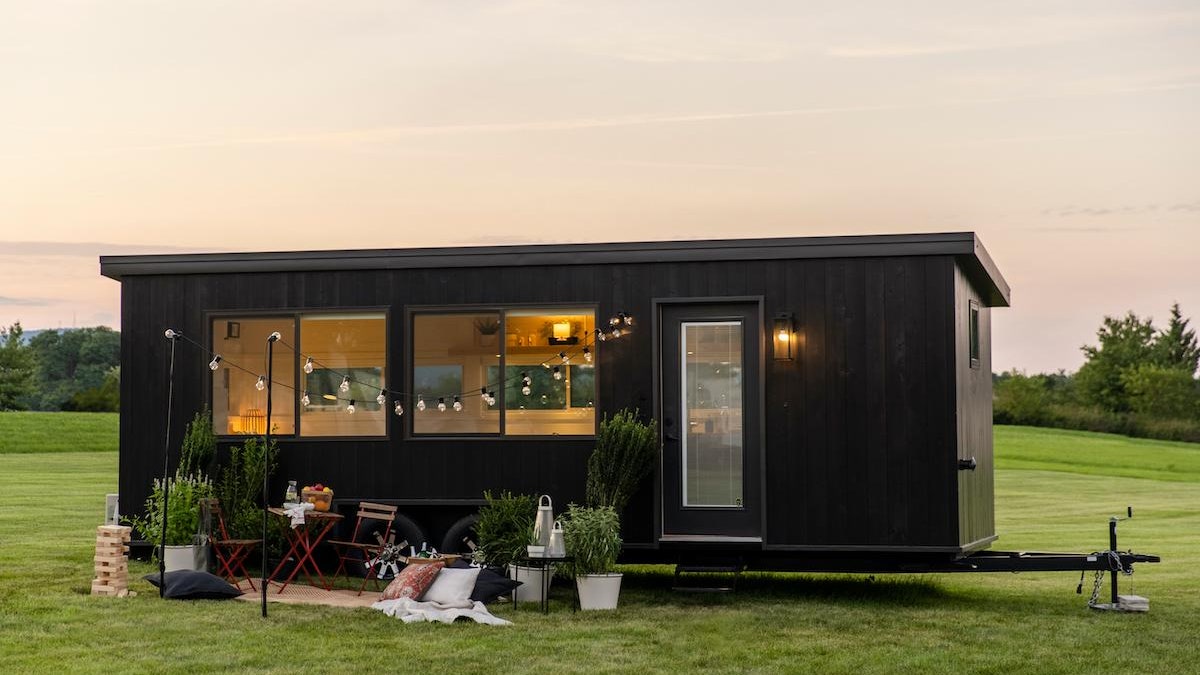
Tiny houses are gaining in popularity across the U.S—after all, these miniature homes are affordable, energy efficient, and easy to maintain. Plus, they offer a simpler lifestyle, with no room for clutter or things you don’t need. You can’t insure a tiny house with a standard home insurance policy, but there are a number of other coverage options available to you depending on how you use the home.
What Is a Tiny House?
A tiny house is exactly what it sounds like: a really small house. While there are no official size limits, tiny houses tend to be between 100 and 400 square feet.
Tiny houses are either homes on wheels, or stationary. This distinction, along with how you use the home determines the type of insurance you need.
Is Tiny House Insurance Required?
As long as your tiny house is stationary and you finance it yourself or with a personal loan, you’re not legally required to insure it. However, once your tiny house hits the road, it’s subject to the same state insurance requirements as cars and RVs. That means that, depending on your state, you’ll likely need liability car insurance at the very least.
What States Allow Tiny Houses?
Check your state's specific laws on residential zoning and RVs to find if a tiny home is a viable and legal residence. First, find out which category your house falls in: Does it have a foundation or wheels?
A tiny home with wheels. These tiny homes often adhere to RV codes and regulations, which can be less strict than typical permanent home laws. However, you may not be able to get permanent residency with an RV.
A tiny home on a foundation. Your tiny home, complete with a foundation, might have a tougher time becoming a legal residence compared to an RV parked on a rented lot. There may also be restrictions on square footage based on local laws. Check with your county before even considering pouring a slab.
RV Insurance for Tiny Houses
RV insurance may be the right choice if your tiny house is on wheels and you plan to move around frequently because it covers your home while it’s parked and during transport. As RV insurance is designed for travelers, it includes provisions that some of the other options don’t—namely, collision coverage. To qualify for RV insurance, the tiny house must meet standards from the Recreational Vehicle Industry Association (RVIA).
Basic RV policies typically include these types of coverage:
- Collision—This kicks in if your tiny house is damaged in an accident with an object or another vehicle, regardless of fault.
- Comprehensive—Also known as “other than collision,” this covers events beyond your control, such as theft, vandalism, fire, falling objects, weather-related incidents, and collisions with animals.
- Liability—It helps to pay for property damages and injuries that you cause.
- Uninsured/underinsured motorist—This covers you if your tiny home is hit by someone with no insurance or not enough insurance. It helps pay for damages to your tiny home, personal injuries, and lost wages if you can’t work.
- Personal property—As the name implies, this covers your personal property in the event that it’s lost, damaged, or destroyed.
- Medical payment—This helps cover medical bills for you and your passengers if your tiny house is in an accident.
The difference in price between RV and manufactured home coverage is due to the fact that RV insurance protects your home while you move it around the country, which puts your tiny home at significantly more risk than a stationary home. If your tiny home is eligible for both manufactured or mobile home insurance and RV insurance, consider whether the ability to move your home freely is worth the increase in price.